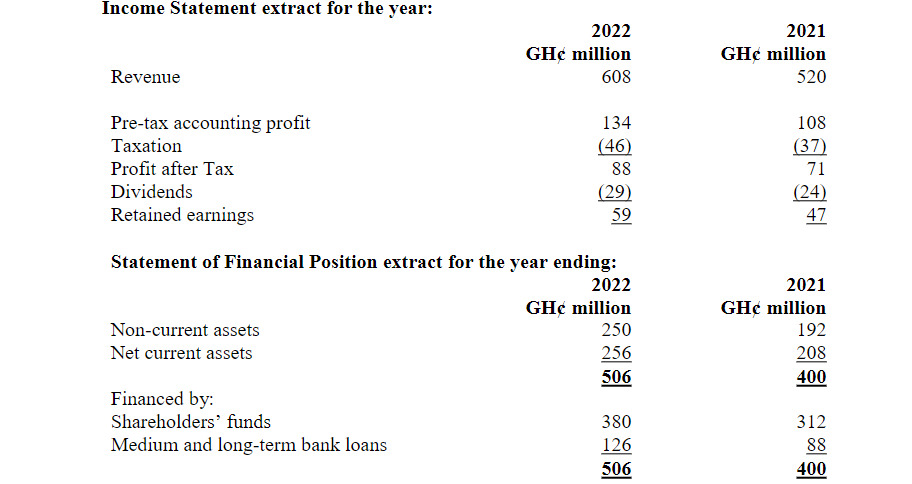Volta Advisory Ltd (VAR) began trading on 1 January 2014. It specializes in the provision of expert advice to clients in accountancy, taxation, and regulatory compliance. It has a team of professional advisors, each specializing in one of these three areas of advice.
VAR has a target for delivering its services to clients promptly. From the time the client asks for advice, VAR undertakes to provide a formal report to the client within 10 working days. The following information relates to the financial year ended 31 December 2016.
i) The professional advisors are budgeted to work 220 days each year. They charge GH¢1,400 per day to new clients and GH¢1,200 to established clients.
ii) As a marketing measure intended to win new business, the advisors also give consultations to potential clients on a ‘no fee’ basis. These consultations, which are budgeted to take one day each, are accounted for as business development costs in the marketing budget.
iii) The professional advisors are also required to attend some ‘workshops’ with new clients who are having difficulties with implementing the advice that they have been given by VAR. These workshops, which are also given on a ‘no fee’ basis, are budgeted to last two days.
iv) VAR also has a help desk to provide client support. It responds to telephone and e-mail inquiries from all new and established clients.
v) The team of professional advisors is exactly 50. It is a policy of VAR to limit the team to 50, regardless of the volume of demand for its services.
vi) All professional advisors are paid a salary of GH¢100,000 per year. In addition, they are entitled to share equally in an annual bonus. The bonus is 50% of the amount by which fee income generated exceeds budget minus the revenue foregone as a result of having to give workshops for clients. This revenue foregone is assessed at a notional daily rate of GH¢1,200 per advisor/day.
vii) Operating expenses of the business, excluding salaries of the advisors, were GH¢3,100,000 in 2016. The budget for these expenses was GH¢2,800,000.
Other information
|
Budget 2016 |
Actual 2016 |
| Professional advisors, by category: |
|
|
| Accounting |
15 |
10 |
| Tax |
20 |
20 |
| Compliance |
15 |
20 |
| Enquiries about seeking new advice: |
|
|
| New clients |
2,600 |
2,200 |
| Established clients |
4,000 |
3,700 |
| Number of chargeable client days: |
|
|
| New clients |
2,600 |
2,750 |
| Established clients |
5,100 |
5,500 |
| Average client days per job |
4 |
4 |
| Mix of chargeable client days: |
|
|
| Accounting |
1,155 |
1,650 |
| Tax |
1,540 |
3,300 |
| Compliance |
1,155 |
3,300 |
The following are actual results for each of the three years 2014-2016:
|
2014 |
2015 |
2016 |
| Number of clients |
160 |
248 |
347 |
| Number of complaints from clients |
50 |
75 |
95 |
| Number of accounts in dispute |
10 |
7 |
5 |
| Support desk: percentage of calls resolved |
86% |
94% |
97% |
| Percentage of jobs completed within 10 days |
90% |
95% |
98% |
| Average time to complete a job (days) |
12.6 |
10.7 |
9.5 |
| Chargeable client days |
7,200 |
7,750 |
8,250 |
| Number of consultations (business development) |
50 |
100 |
150 |
| Number of workshops given |
110 |
135 |
165 |
| Revenue (GH¢000) |
8,920 |
9,740 |
? |
| Net profit (GH¢000) |
1,740 |
1,940 |
? |
Required: Using the information provided, analyze and discuss the performance of VAR for the year to 31 December 2016, under the following headings:
a) Financial performance and competitiveness;
b) Internal efficiency;
c) External effectiveness.


